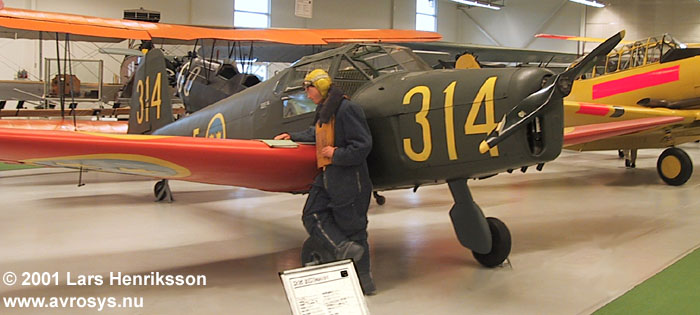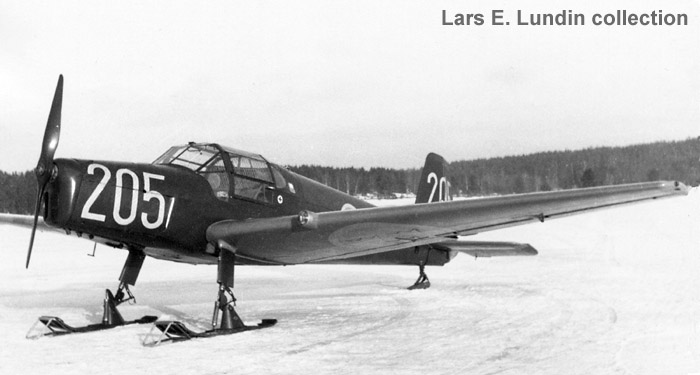|
|
||
| Sk 25 - Bücker Bü 181B-1 Bestmann (1942-1954) | ||
| Page 1(1) | ||
|
|
||
 |
||
|
When the Air Force needed a new trainer aircraft in the beginning of the forties, the recent standard trainer of the German Luftwaffe - the Bücker Bestmann - was choosen. It was designated Sk 25 in Sweden. Due to the war, the aircraft had to be manufactured under license in Sweden. The aircraft had mainly been designed by a Swede, Anders J. Andersson, who later became the man behind SAAB Safir. Carl Clemens Bücker, the owner of Firma Bücker Flugzeugbau Gmbh, founded in 1932, had earlier manufactured aircraft in Sweden. His Swedish enterprise, Svenska Aero AB, had built aircraft under licence from Heinkel, but had also started to develop designs of their own. But in 1932, Bücker, who had suffered under financial strain during several years, had to sell Svenska Aero to ASJA (later SAAB) and started his new factory in Johannisthal (Berlin), Germany. Before he left Sweden, he was conferred the Order of the Sword, perhaps to silence the consciences of certain people in the Air Force and at AJSA, which without doubt had acted in an unfair way against Bücker. After ten years Bücker had still a grudge against SAAB and did not like the idea to allow this company to manufacture his design under license. He felt that ASJA had exploited his financial difficulties when it bought his firm at a too low price. Discussions were brought up to start a new Swedish aircraft factory with the help of Bücker. But in the contract of sale, there was a clause that forbade Bücker to compete with SAAB. This made it impossible for Bücker to play a part in establishing a new aircraft factory in Sweden. The Air Board, where most leading persons did not like the monopoly of SAAB, took advantage of the situation. Despite protests from SAAB, the order was passed to Hägglund & Söner at Örnsköldsvik. This company had some experience as subcontractor to SAAB, but their main product were coach bodies. The low-winged aircraft had the instructor and pupil sitting side-by-side. It was constructed from welded steel tubes, wood and aluminium in combination. The fuselage was mainly covered by veneer. The wings were covered by veneer and canvas. Also all control surfaces were covered by canvas. The engine cowling was made of metal plating. The fixed landing gear could be fitted with skis in winter time. One
pattern aircraft was delivered from Germany in June, 1942. After that, Hägglund
& Söner built 120 aircraft at their factory. The Swedish-built
aircraft were delivered to the Air Force Flight Academy (F 5) at Ljungbyhed in
1944-1946. The single Germany-built Sk 25 was based at Wing F 8 at
Barkarby. In
1954, all remaining Sk 25s were written off and sold, most of them to
civil owners in Germany.
All
Sk 25’s were powered with 4-cylinder air-cooled inline Hirth HM 500A-1
engines. This engine delivered 105 hp. Photo
above:
Sk 25 #25111 (c/n 114). Exhibited at Flygvapenmuseum. Photo below: A winter equipped Sk 25 from F 5. Length: 7,85 m. Span: 10,60 m. MTOW: 850 kg. Max. speed: 215 km/h.
|
||
 |
||
|
|
||
|
|
||
|
|
||
|
© Lars Henriksson |
|
Updated 2010-03-21 |
|
|
||